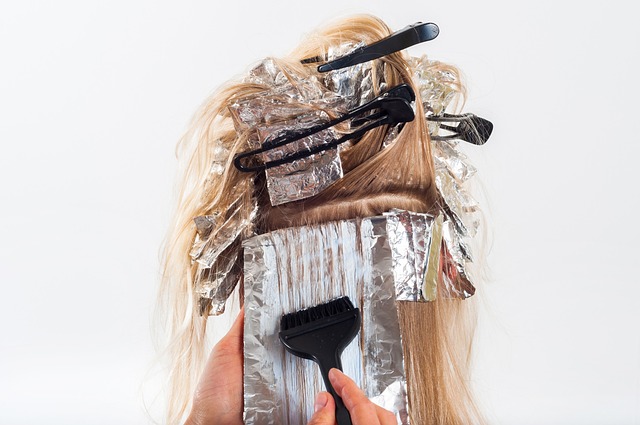In today’s society, teenagers are facing an increasing amount of pressure and stress. With the constant pressures to perform well in school, maintain a social life, and navigate through the ever-changing world of technology, it’s no wonder that many teenagers turn to self-injury as a coping mechanism.
Self-injury, also known as self-harm or self-mutilation, is the act of intentionally harming one’s own body without suicidal intentions. This issue has been on the rise among teenagers in recent years and it is a serious concern for parents, educators, and mental health professionals alike.
Why is self-injury such a prevalent issue among teenagers? Here are some reasons why:
Coping Mechanism for Emotional Pain
One of the primary reasons why self-injury is a serious issue among teenagers is because it serves as a coping mechanism for emotional pain. Teenagers may turn to self-harm in order to temporarily escape from overwhelming feelings of sadness, anger, or anxiety. They may also use self-injury as a way to express their emotions when they feel unable to do so through words.
This coping mechanism can become addictive and difficult for teenagers to break away from. There are different types of self injury, including cutting, burning, and hitting oneself. It is important for adults to understand that self-injury is a sign of deeper emotional distress and should not be dismissed or ignored.
Pressure to Conform and Fit In
Another reason for the prevalence of self-injury among teenagers is the pressure to conform and fit in with their peers. Adolescence is a time when teenagers are trying to figure out their identity and where they fit in society. This can lead to feelings of insecurity, low self-esteem, and social anxiety. In order to cope with these pressures, some teenagers may turn to self-harm as a way to gain control over their bodies or relieve emotional pain.
The desire to fit in can also contribute to the normalization of self-injury within certain peer groups, making it seem like an acceptable behavior. This further perpetuates the issue and makes it difficult for individuals struggling with self-injury to seek help.
Influence of Peer Groups
The influence of peer groups is a significant factor in the prevalence of self-injury among teenagers. Teenagers often rely on their friends for support and validation, and this can lead to the adoption of harmful behaviors such as self-harm. Seeing peers engaging in self-injury can normalize the behavior and make it seem like an acceptable coping mechanism.
Peer pressure can also play a role in urging teenagers to engage in self-injury, especially if they feel like they need to prove themselves or fit into a certain group. This further highlights the importance of promoting healthy coping mechanisms and creating environments where individuals are not influenced by others to engage in harmful behaviors.
Struggle with Mental Health Issues
Many teenagers who engage in self-injury also struggle with underlying mental health issues. Self-harm can be a symptom of various mental illnesses such as depression, anxiety, and borderline personality disorder. These mental health issues can make individuals more susceptible to turning to self-injury as a coping mechanism.
Furthermore, the act of self-injury itself can also worsen existing mental health conditions or trigger new ones. It is crucial for parents and caregivers to pay attention to any warning signs of self-injury and seek professional help for their child’s overall well-being.
Lack of Healthy Coping Skills
Another reason why self-injury is a serious issue among teenagers is the lack of healthy coping skills. Many young people may not have been taught how to effectively manage and express their emotions in a healthy manner. This can lead to turning to self-harm as a temporary relief from emotional pain.
It is important for teenagers to learn and develop healthy coping skills such as talking to a trusted adult, engaging in physical activity, or practicing relaxation techniques. Providing adolescents with these tools can help prevent the use of self-injury as a coping mechanism.
Exposure to Traumatic Events or Experiences
Finally, exposure to traumatic events or experiences can also contribute to the prevalence of self-injury among teenagers. Adolescence is a time when individuals are more vulnerable and may be facing difficult situations such as abuse, bullying, or loss. These experiences can leave lasting emotional scars and may lead to self-injury as a way to cope with the trauma.
It is important for parents, educators, and mental health professionals to be aware of any potential traumatic events or experiences in a teenager’s life and provide appropriate support. Addressing these underlying issues can help prevent the use of self-injury as a coping mechanism.

Self-injury among teenagers is a serious issue that requires attention and understanding from adults. It is not a behavior that should be dismissed or ignored, but rather an indication of deeper emotional distress. By addressing the underlying reasons for why teenagers turn to self-harm as a coping mechanism, we can work towards promoting healthy coping skills and creating supportive environments for adolescents. It is important to provide resources and support for both the individual struggling with self-injury and those around them in order to prevent this harmful behavior.







